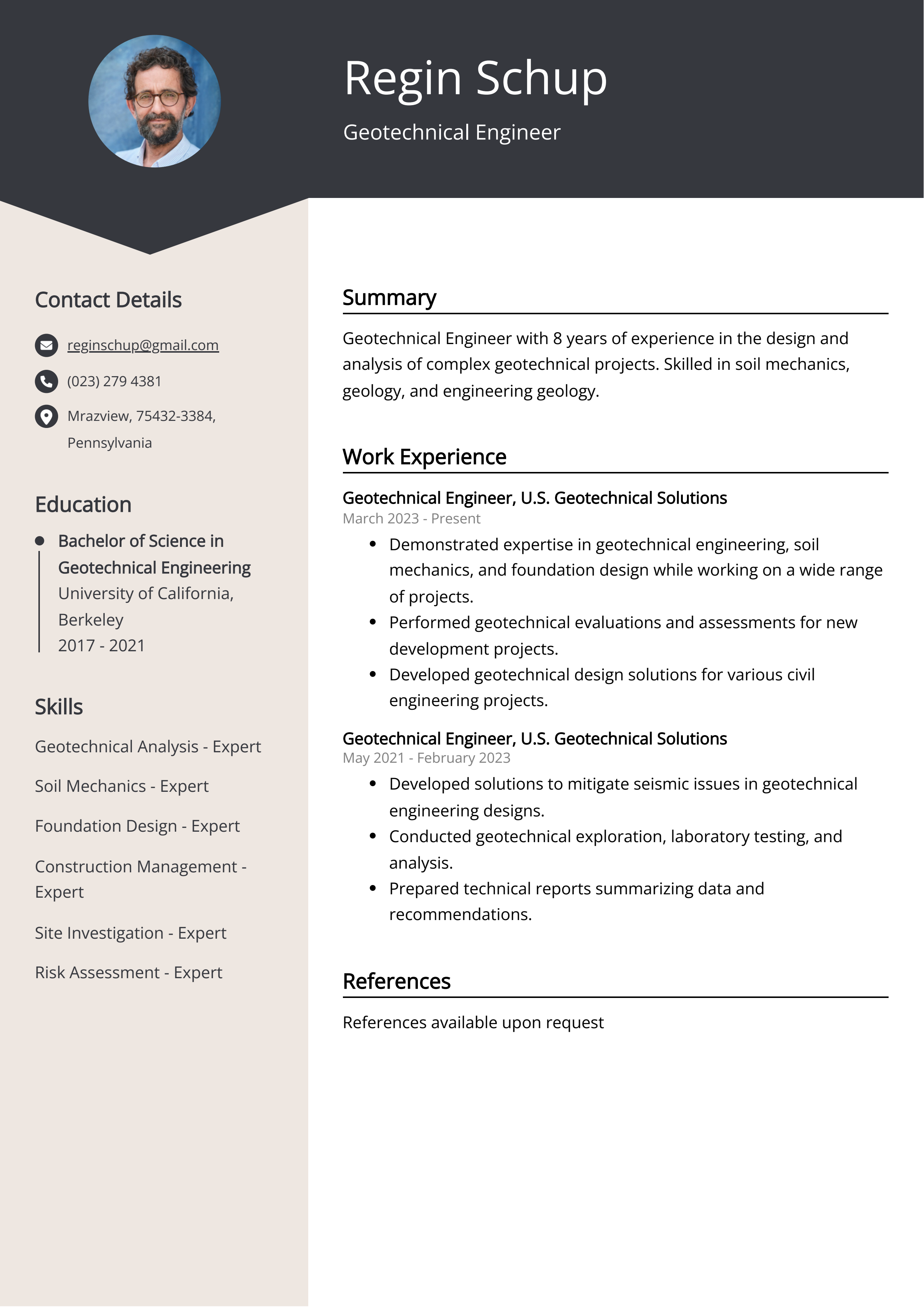Not known Facts About Geotheta
The 5-Second Trick For Geotheta
Table of ContentsGetting The Geotheta To WorkThings about GeothetaThe Ultimate Guide To GeothetaThings about GeothetaHow Geotheta can Save You Time, Stress, and Money.

They carry out site investigations, collect examples, carry out research laboratory examinations, and evaluate data to examine the viability of the ground for building jobs - Engineer of Record. Based upon their findings, geotechnical designers give recommendations for structure style, incline security, preserving frameworks, and mitigation of geotechnical hazards. They work together with other specialists, such as architects, structural engineers, and construction groups, to make sure that geotechnical factors to consider are incorporated right into the general project design and implementation
By assessing the behavior and residential properties of dirt and rock, they can identify potential geotechnical threats such as landslides, soil settlement, or incline instability. Their knowledge helps avoid failures or mishaps that could jeopardize lives and residential property. Right here are some in-depth obligations and duties of a geotechnical engineer: Site Examination: Geotechnical engineers conduct website examinations to gather information on subsurface problems.
They interpret the data to understand the homes and behavior of the soil and rock, including their stamina, permeability, compaction features, and groundwater problems. Geotechnical Evaluation and Design: Geotechnical engineers analyze the data gathered throughout website examinations to evaluate the security and viability of the website for building tasks. They execute geotechnical computations and modeling to review factors such as birthing capacity, negotiation, incline security, lateral earth stress, and groundwater circulation.
Little Known Facts About Geotheta.
Foundation Design: Geotechnical engineers play an essential function in developing structures that can securely support the desired framework. They examine the dirt conditions and lots needs to establish the appropriate structure kind, such as shallow foundations (e.g., footings), deep foundations (e.g (https://gravatar.com/exactlypainterdeb7b76e1a)., stacks), or specialized methods like dirt improvement. They consider elements such as settlement limits, birthing capability, and soil-structure interaction to develop optimal structure designs
They assess building and construction plans, monitor site activities, and conduct area assessments to validate that the layout suggestions are followed. If unforeseen geotechnical issues develop, they examine the circumstance and supply suggestions for removal or adjustments to the style. Danger Assessment and Mitigation: Geotechnical designers assess geotechnical threats and threats related to the task website, such as landslides, liquefaction, or dirt erosion.

Cooperation and Interaction: Geotechnical engineers work closely with other specialists included in a task, such as designers, architectural designers, and building groups. Effective communication and collaboration are necessary to incorporate geotechnical factors to consider right into the overall job style and building procedure. Geotechnical designers offer technical knowledge, solution questions, and ensure that geotechnical requirements are satisfied.
The Single Strategy To Use For Geotheta
Below are some kinds of geotechnical designers: Foundation Designer: Structure engineers concentrate on creating and examining structures for frameworks. They assess the soil problems, lots requirements, and website characteristics to figure out the most suitable structure type and style, such as shallow foundations, deep foundations, or specialized techniques like heap foundations.
They assess the elements affecting slope stability, such as soil properties, groundwater problems, and incline geometry, and develop methods to stop incline failings and minimize risks. Earthquake Designer: Earthquake engineers specialize in analyzing and designing frameworks to hold up against seismic forces. They evaluate the seismic danger of a site, assess soil liquefaction potential, and establish seismic design requirements to make certain the safety and security and strength of structures during quakes.
They execute field screening, gather examples, and analyze the gathered data to characterize the soil buildings, geologic formations, and groundwater conditions at a website. Geotechnical Instrumentation Engineer: Geotechnical instrumentation designers concentrate on monitoring and determining the behavior of dirt, rock, and structures. They install and preserve instrumentation systems that monitor aspects such as soil negotiation, groundwater degrees, incline movements, and architectural variations to examine efficiency and offer early warnings of possible concerns.
What Does Geotheta Mean?
They conduct examinations such as triaxial examinations, debt consolidation tests, straight shear examinations, and leaks in the structure examinations to collect information for geotechnical evaluation and style. Geosynthetics Designer: Geosynthetics designers specialize in the layout and application of geosynthetic products, such as geotextiles, geogrids, and geomembranes. They make use of these materials to boost dirt stability, enhance slopes, offer drainage options, and control erosion.
They tend to be investigatory individuals, which means they're intellectual, introspective, and investigative. They are curious, methodical, rational, analytical, and sensible. Several of them are also social, implying they're kind, charitable, participating, client, caring, handy, understanding, sensible, and friendly. Does this seem like you? Take our free career test to locate out if geotechnical designer is just one of your top career matches.
In the office environment, geotechnical designers utilize specialized software program devices to execute calculations, produce layouts, and assess data. They prepare reports, review project requirements, connect with customers and staff member, and coordinate task activities. The workplace setting supplies a helpful atmosphere for research study, evaluation, and cooperation with other experts associated with the task.
10 Easy Facts About Geotheta Explained
They often visit job websites to carry out website examinations, assess geotechnical conditions, and gather data for evaluation. These check outs include traveling to various locations, in some cases in remote or tough surfaces. Geotechnical designers may carry out dirt sampling, conduct tests, and display building activities to ensure that the geotechnical elements of the job are being implemented appropriately.
Geotechnical engineers also work in specialized geotechnical laboratories. Geotechnical research laboratory engineers function thoroughly in these environments, managing testing tools, running instruments, and recording information.